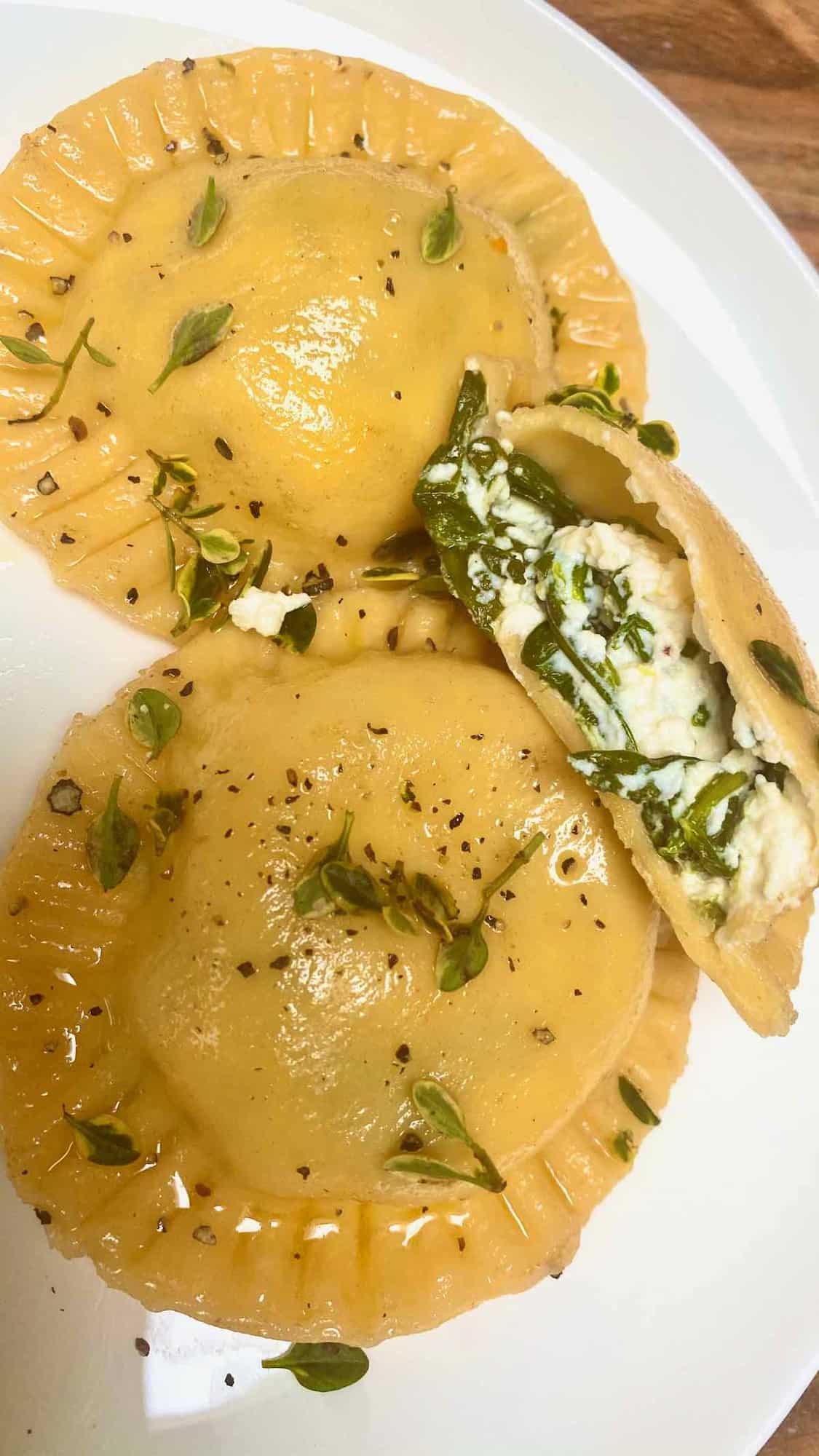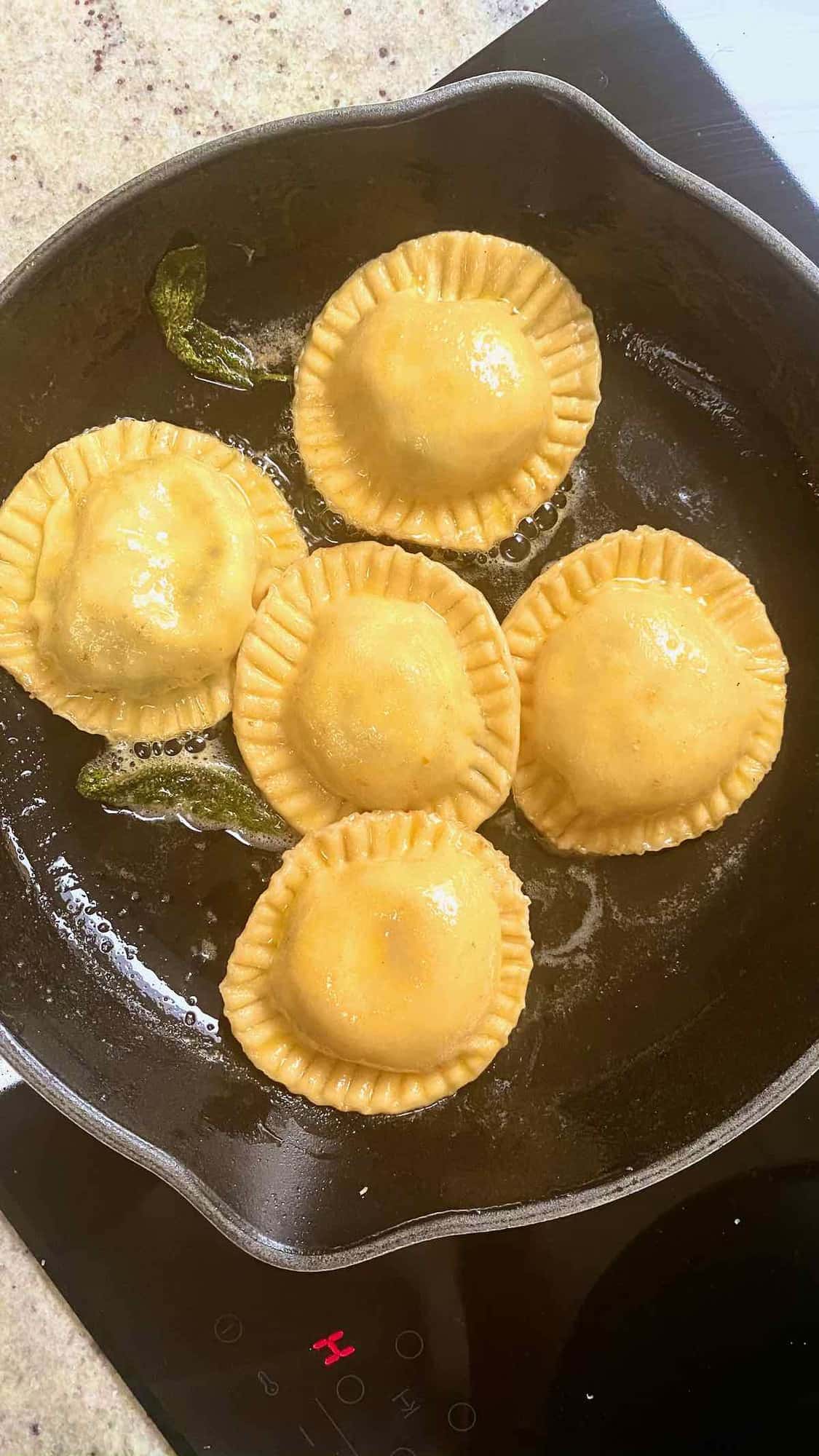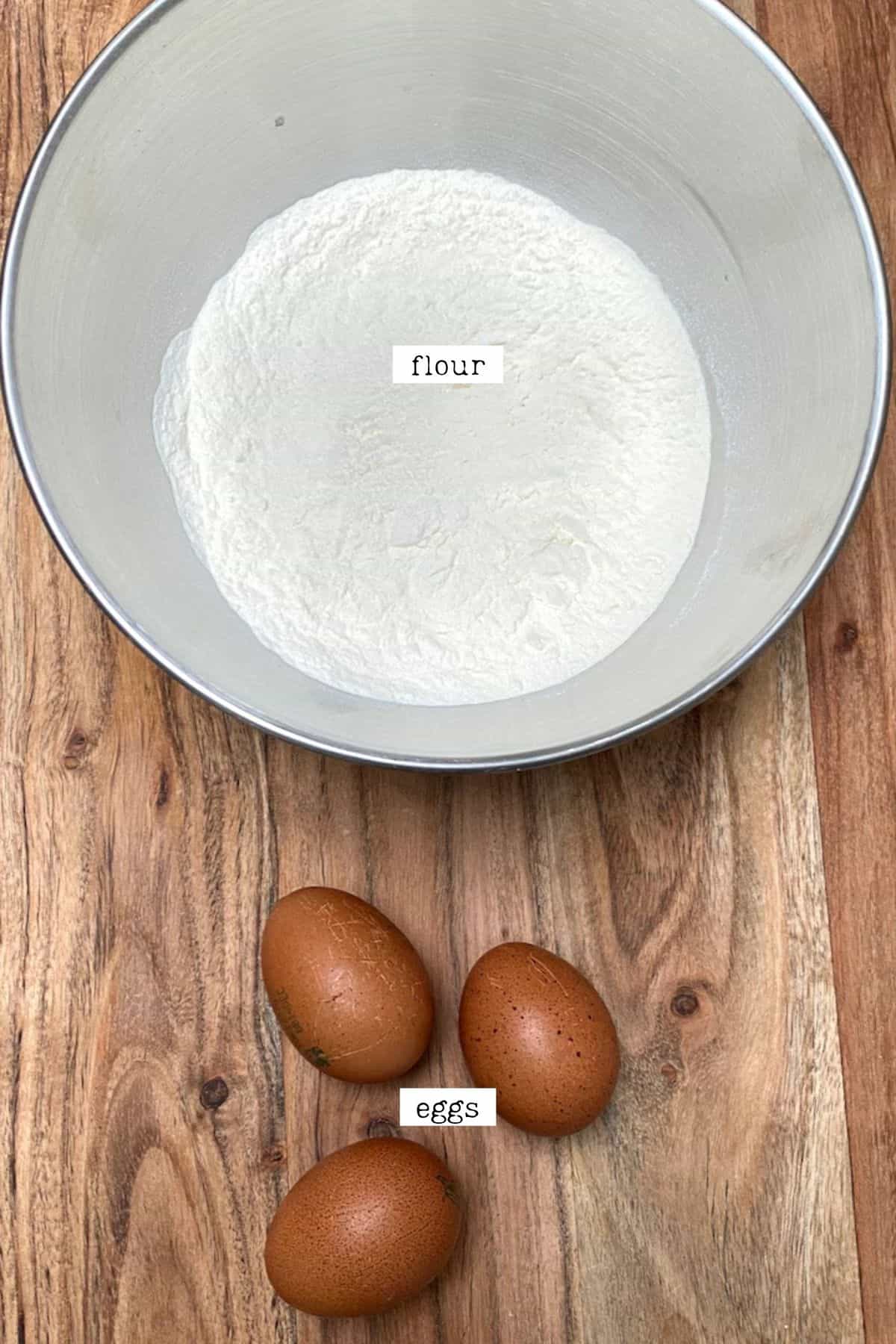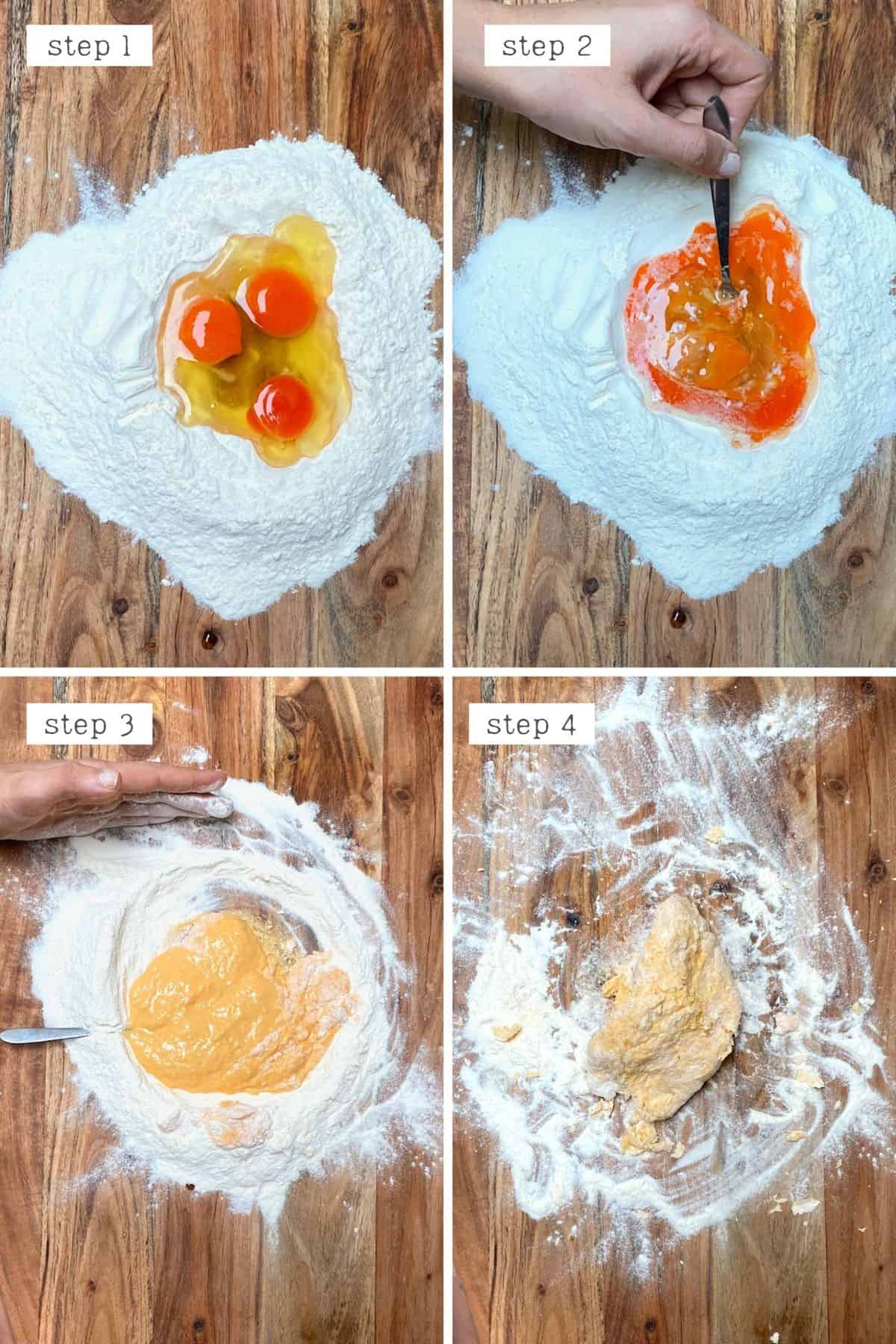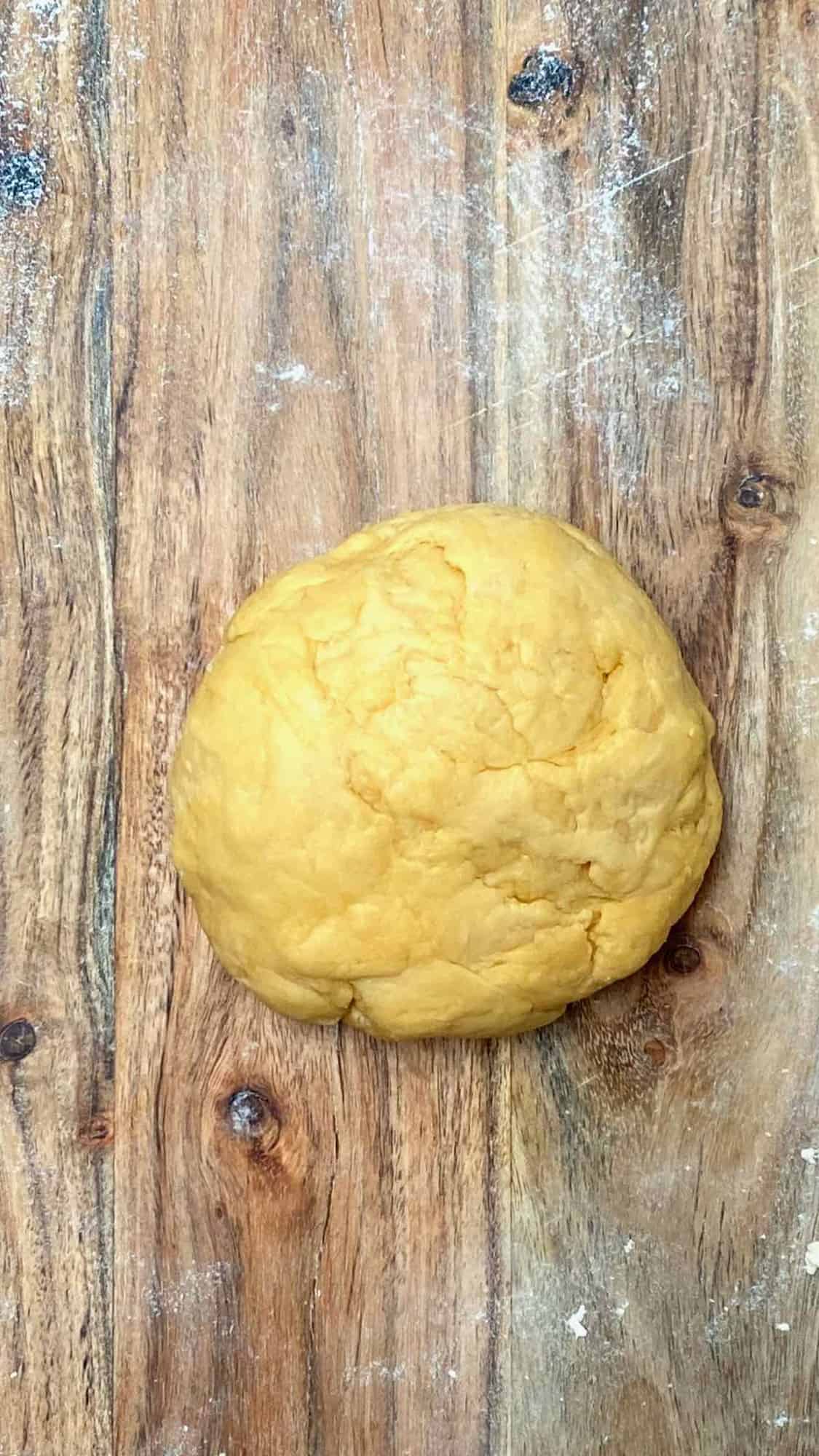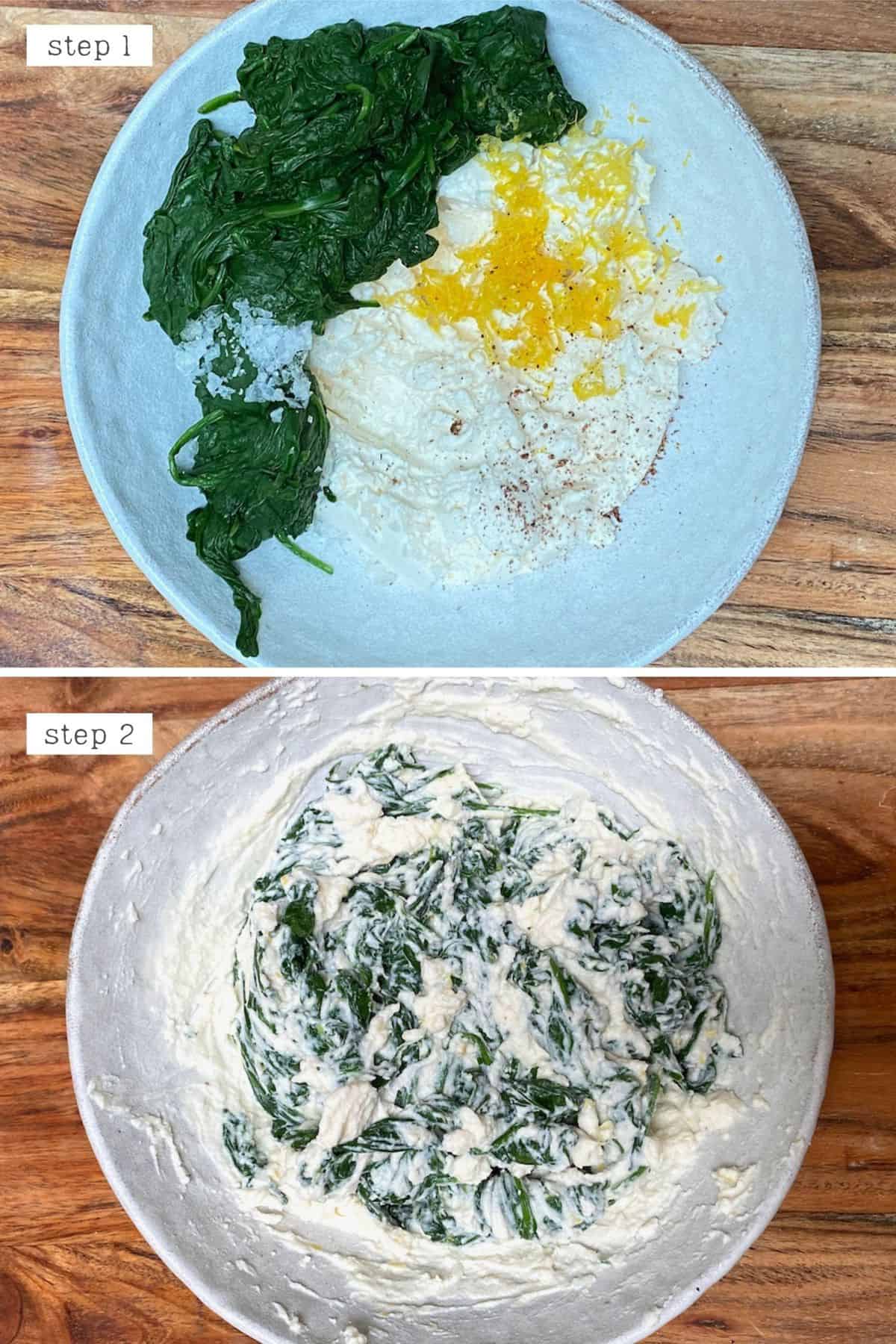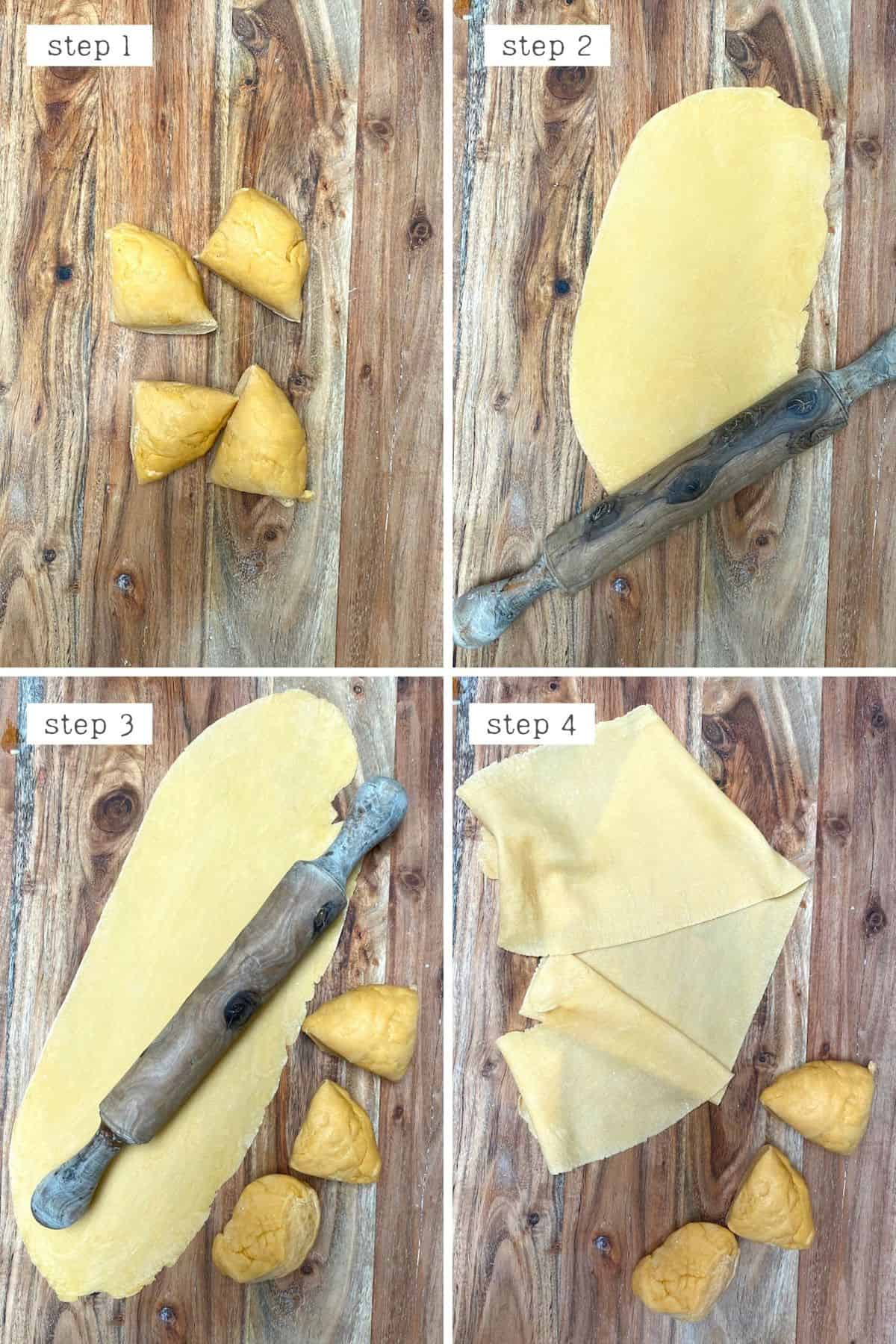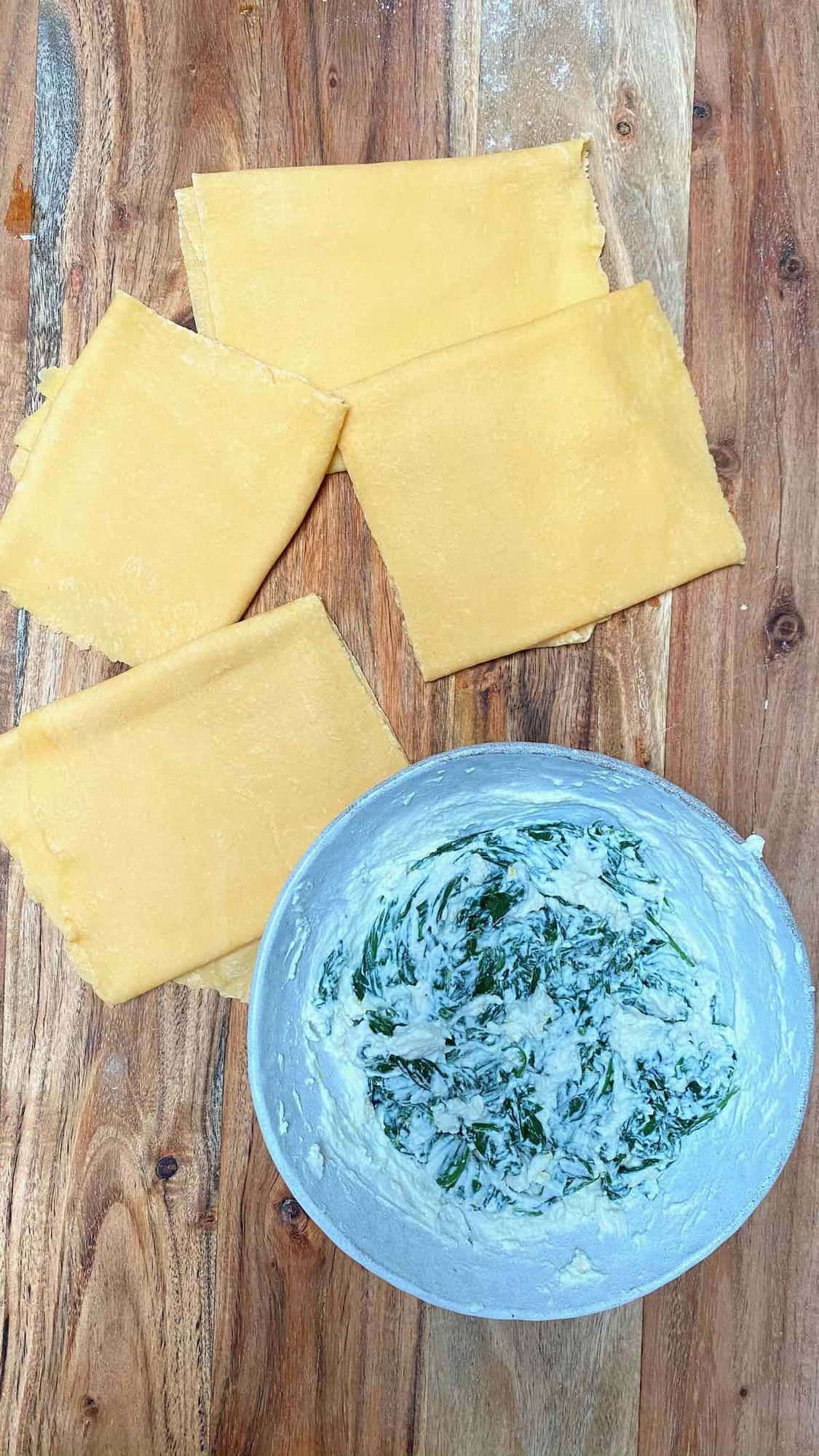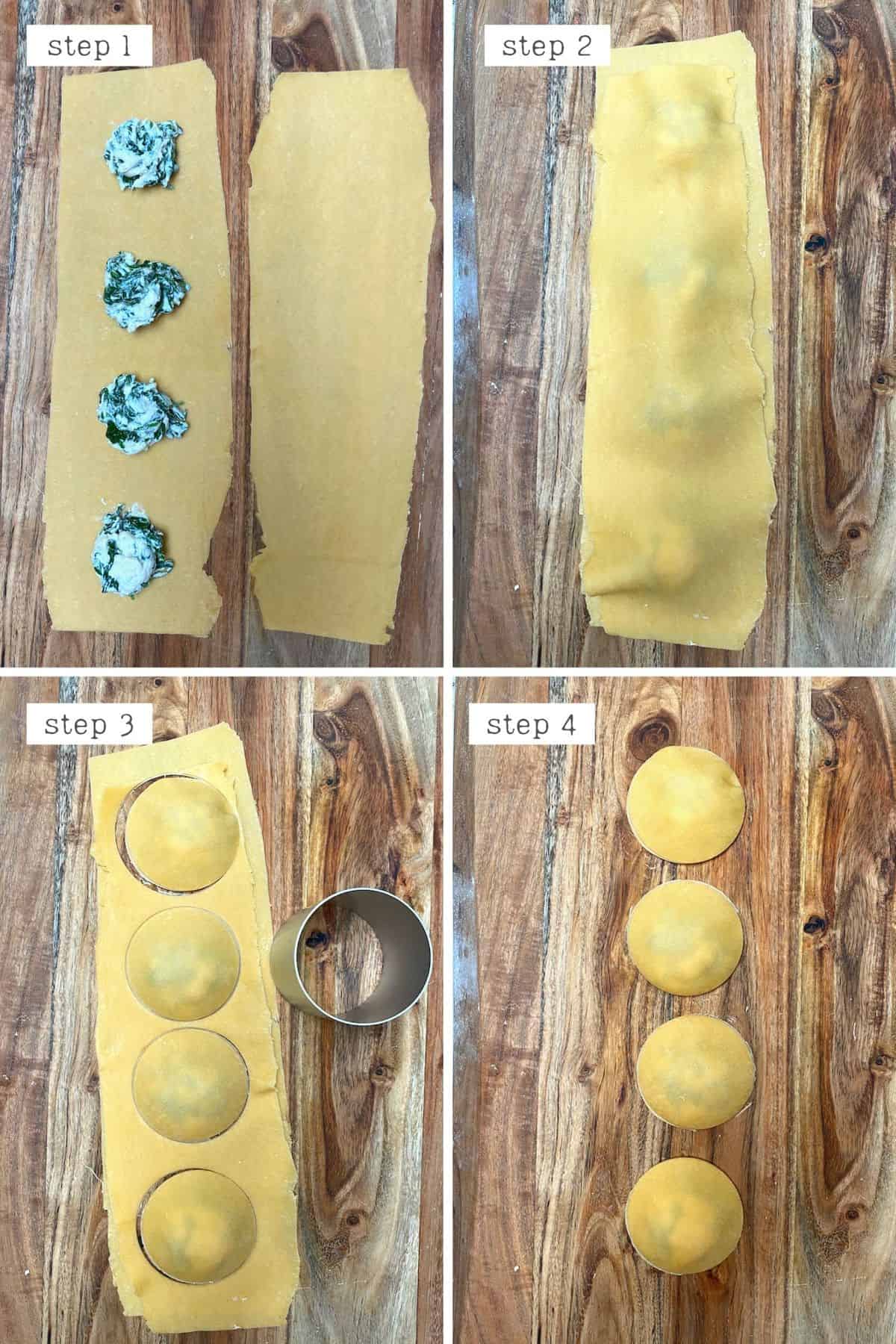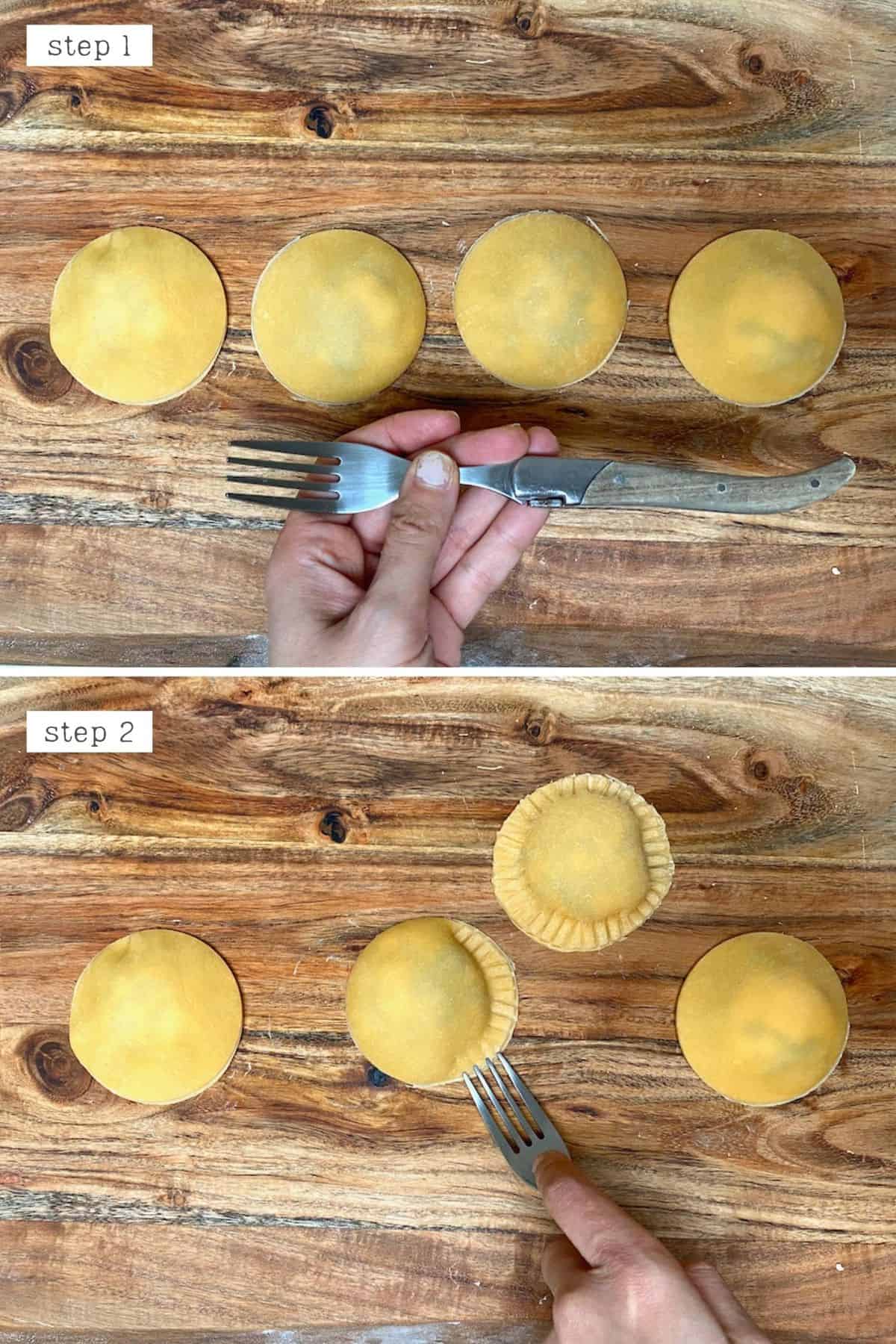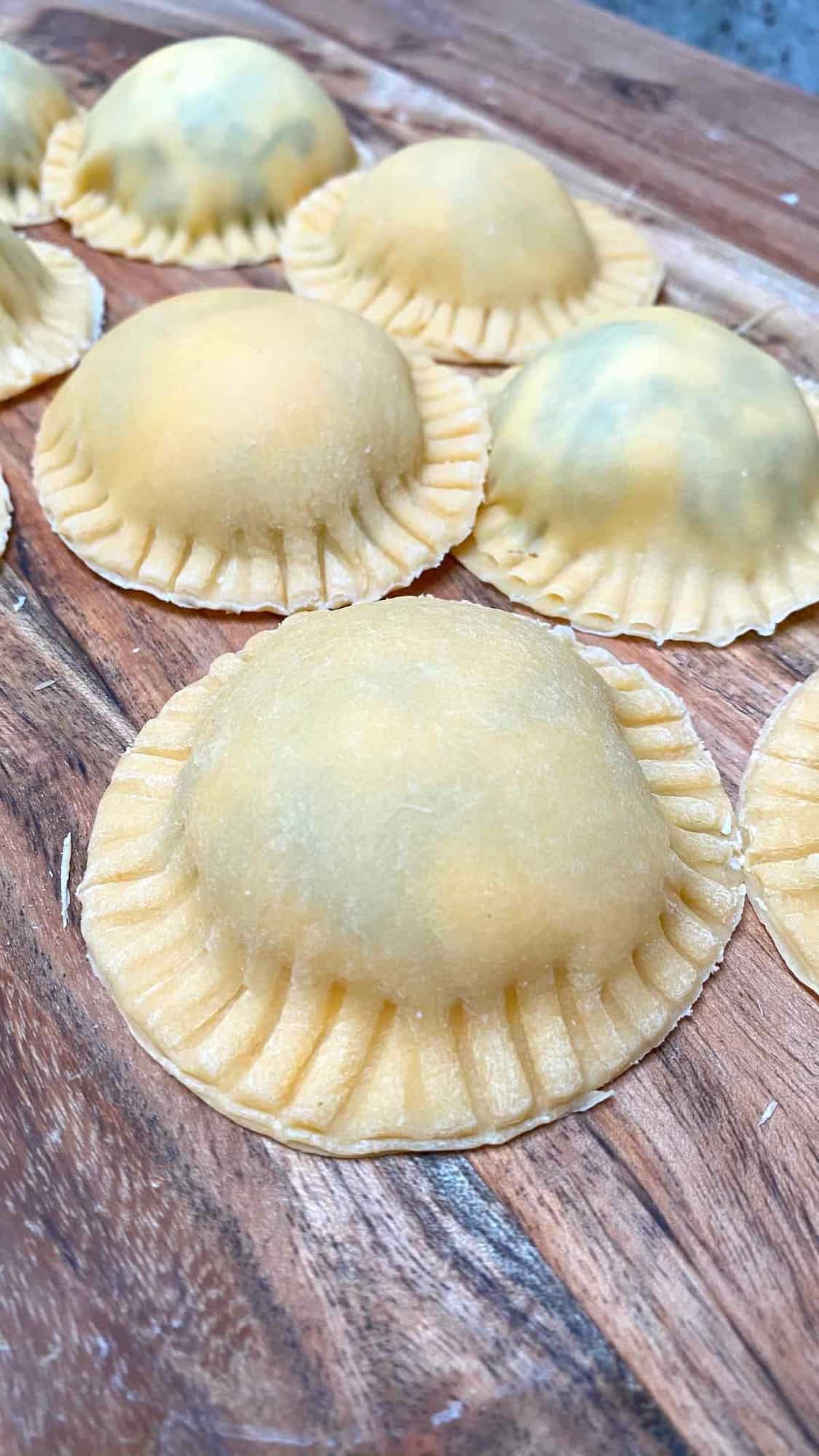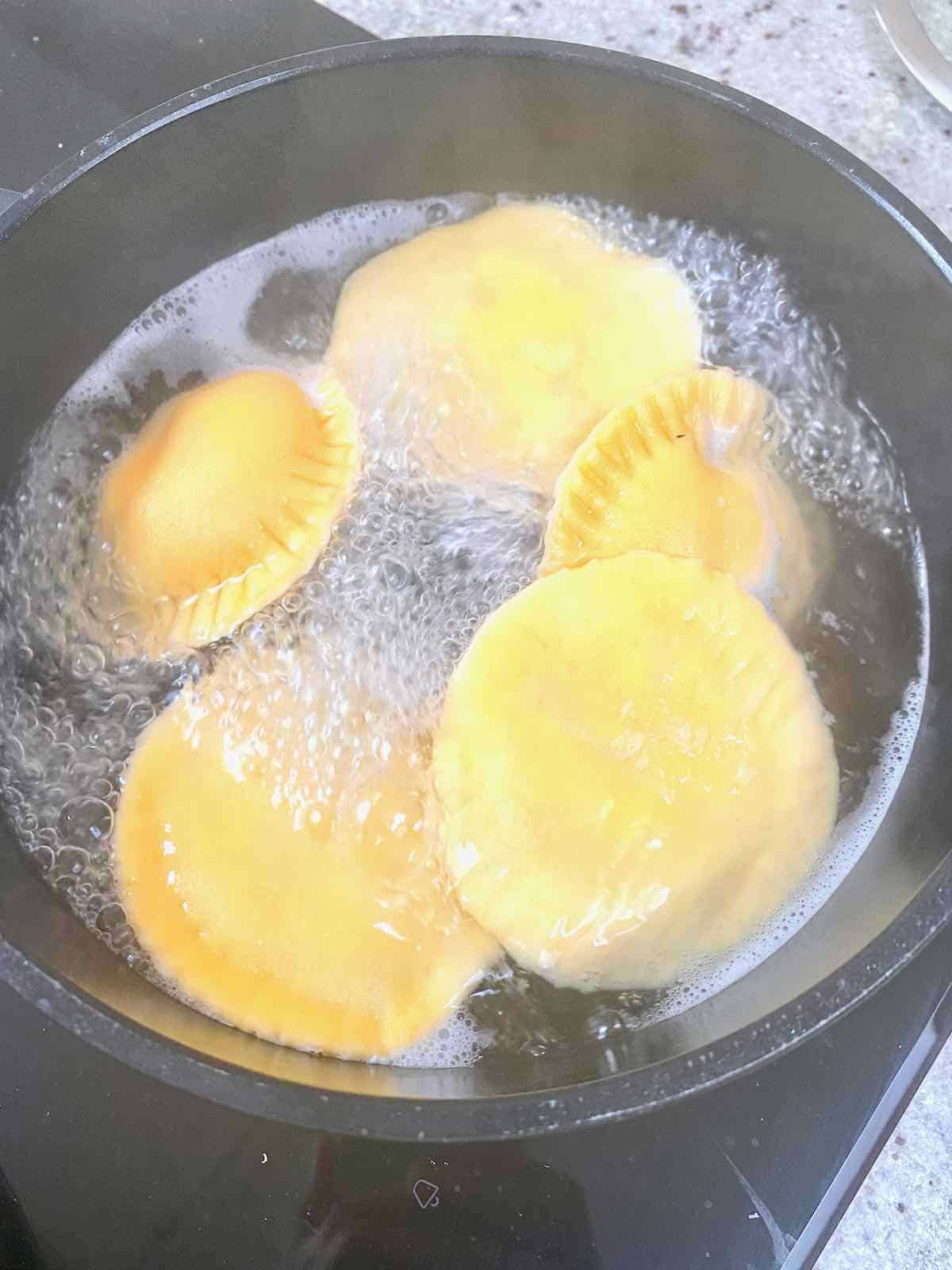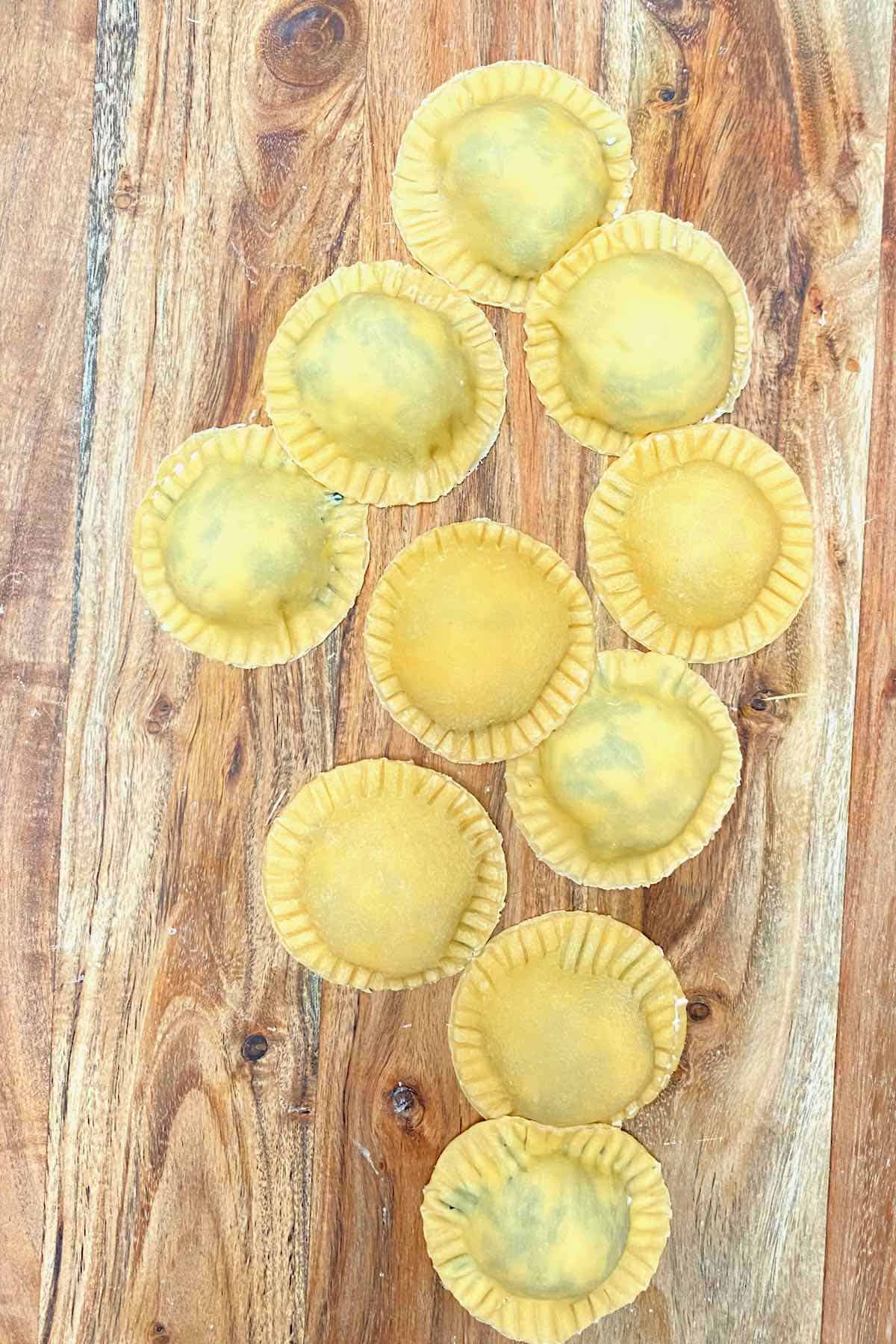I knew I couldn’t stay away from how to make pasta recipes for too long. When I posted my recent recipe for homemade potato gnocchi, it was only a matter of time before I fell down the pasta rabbit hole (one day, to be exact). Now it’s the turn of this delicious homemade spinach ravioli. Like most pasta dough, making homemade ravioli is actually surprisingly simple. In fact, easy, fresh, and delicious pasta is one of my new favorite homemade ventures. Once you have your ravioli dough sorted, there are tons of ravioli fillings you could choose from. This time, I’m sharing a simple spinach and ricotta ravioli filling. In fact, this easy ravioli recipe may seem more complicated than it is just because of the length of this post – but that’s just because I’ve chocked it full of handy tips and tricks! This includes how to make ravioli dough and deal with it, multiple ways to shape and cut your ravioli, and the delicious spinach ricotta stuffing.
The step by step instructions
Step 1: Prepare the ravioli dough
All you need is flour and eggs. The standard pasta serving calls for 100g (3.5 oz) flour and 1 egg per person. Pour your flour out onto a clean, dry work surface and create a well in the middle. Add the eggs to the center. Alternatively, add the flour and eggs into a bowl. Start to incorporate the dough by beating the eggs with a fork, mixing a little flour into it, slowly adding more flour to the wet mixture until a dough begins to form. Then, knead the dough with your hands lightly to form into a smooth dough (this usually takes 5-8 minutes). If it is a little dry, then you can add a little water – just enough to stop it from being crumbly. Once the dough is smooth, shape it into a ball, and place in an oiled bowl covered with a kitchen towel. Rest for 30 minutes. Don’t skip this resting step as the gluten needs to relax for a more elastic ravioli dough.
Step 2: Prepare the spinach and ricotta ravioli filling
While the dough rests, prepare the spinach and ricotta ravioli filling. Steam the spinach, then allow it to cool slightly before squeezing as much of the excess water from it as possible. You can do this by hand or place the spinach in a fine-mesh sieve and press down on it with a large spoon or something similar. Add to a bowl with the ricotta, lemon zest, salt, and nutmeg and stir to incorporate properly. Taste and adjust any seasonings if necessary (salt & pepper, etc.)
Step 3: Roll out the pasta dough
Chop the pasta dough into four pieces (make sure you chop it into an even amount of pieces; one for the top and bottom layer of the stuffed ravioli). To roll out the pasta pieces, you can use a rolling pin or a pasta machine.
By Hand
The aim is to roll all four dough pieces into fairly even-sized long strips of pasta dough (as one will be the top and one will be the bottom of the ravioli). Roll them out on a surface lightly dusted with flour. The key is to get the pasta as thin as you can so that they aren’t chewy or un-cooked where the two pasta layers meet. The best rule to go by is being able to see the shadow of your hand through the pasta sheets so it’s practically paper-thin (as it will expand when cooked). Do this one at a time, leaving the other dough pieces under a damp kitchen towel to stop them from drying out.
By Pasta Machine
Roll out a single portion of dough on a lightly floured surface just thin enough to fit the pasta machine’s widest setting. Feed the dough through the machine, then fold it up like a letter (both sides folded into the middle with 3 layers) and feed through the machine again. Then adjust the machine to a thinner setting and repeat this process, decreasing the thickness each time until you reach the second thinnest or thinnest option available (either will work depending on how thick you prefer the pasta). If the dough becomes a little sticky, lightly dust it with a little extra flour. You’ll then want to fill the ravioli before rolling out the second layer of dough. If you do decide to roll them at the same time, then place them under a clean, damp tea towel until they are needed.
Step 4: How to fill & seal the ravioli (3 Ways)
You could use three methods to fill and shape/seal the ravioli, including using a ravioli tray, cutters, or a more rustic by-hand approach.
Free-hand (knife or wheel cutter)
With the rolled out pasta sheet laid out on a surface, place around 1 Tbsp of filling on the pasta sheet, 2cm apart from one another. You can optionally brush the pasta’s edges with water to encourage a tighter seal between the two pasta layers so they don’t come apart during the cooking process. Lay the second sheet of pasta over the first, lightly pressing down around the filling edges, so there aren’t air bubbles in the dough. Using a sharp knife, pizza cutter, or corrugated cutter, cut the pasta into squares. Then, using your fingers, press around the edges to seal them, or use a fork to press down and seal the pasta. Repeat with the remaining two pieces of dough. Try to be fairly even with the size of each ravioli so that they’ll cook at the same rate.
Using Ravioli stamps/Cookie cutters
This process is very similar to the above, with just a few tweaks. When using any cutter, you can lightly press the cutter into the dough to make an indentation in the dough before adding the filling. This will make it easy for you to see exactly where to put the filling and be in the center. Then add the filling according to the above instructions. When you’re ready to cut, press the stamp into the filled ravioli to cut it out and then either seal with your fingers or using a fork.
Using a ravioli tray
If you use a ravioli mold/tray, then make sure to dust it with flour. Lay one piece of dough across it, pressing it into the shape of the mold. Then fill each ravioli mold with just enough filling, so it doesn’t overfill the mold. Then, lay the second piece of dough across that and use a rolling pin or your hands to seal the pasta, cut it out, and then flip it over to get your prepared spinach ravioli. You can use a similar method with certain shaped ice-cube trays. Whichever method you use: Once cut, flour the ravioli lightly, so it doesn’t stick to each other or any surface.
Step 5: How to cook ravioli
As a general rule, to know when ravioli are cooked, place them in salted boiling water, and when they rise to the surface, allow them to cook for a further minute or so, turning once, and they’ll be done. For this spinach ravioli, I found five minutes was enough. However, you can always test one before removing them all from the pan. Then transfer the cooked ravioli to a large skillet with a little butter or oil and your favorite herbs or your choice of sauce.
How to serve
You can serve this ricotta spinach ravioli with the sauce of your choice or lightly sauté with just a little butter/oil and some fresh herbs. What sauce goes well with ravioli? Honestly, any sauce you’d serve with pasta is a good option with this homemade ravioli. Marinara, homemade pesto, and creamy sauces all work well. You can also simply stir into some sage butter. I’ll often serve along with lightly sautéed veggies (cooked as the pasta boils): tomatoes, onion, zucchini, aubergine, sweet corn, extra spinach, etc. You can also bake the ravioli after cooking it for crispy results. Simply transfer the cooked ravioli to a greased baking tray, sprinkle with breadcrumbs, and optionally some cheese. Then bake for 10-15 minutes (at 180ºC/360ºF), until golden brown and crispy. Serve alone or with a simple marinara sauce.
How to store
Once the uncooked pasta is prepared, it’s best to lay them under a clean, damp kitchen towel and use them within a few hours. If you want to wait any longer, then it’s best to freeze the pasta (as it will dry out in the fridge). To freeze the uncooked ravioli: Lay the homemade ravioli out in a single layer on a large baking tray and freeze until solid. Then transfer to any freezer-safe airtight container/bag. Freeze for up to six months. To Cook from frozen: there’s no need to thaw the pasta. Simply cook it from frozen and allow a minute or so extra to the cooking time. Once cooked, this spinach ravioli is best eaten immediately.
Recipe notes
Top Tip: The most critical factor in delicious homemade ravioli is the thickness of the ravioli dough. If it’s too thick, then the edges, where the two sheets meet, will be undercooked and chewy (or even crunchy – eww!). It needs to be almost paper-thin, with the shadow of your hand visible through the dough. If you’d prefer a dairy-free version, you can use this Vegan Ricotta Cheese (Almond Ricotta). I also have a Vegan Pasta though haven’t tried it for ravioli yet. The scraps of ravioli dough can be re-rolled, turned into other shapes of pasta, or used in soups/stews. You can use a food processor to mix and knead the pasta dough, rather than manually on a wooden board. When chopping the pasta, a wooden board is great for creating lots of very tiny grooves/texture within the pasta, perfect for picking up more sauce. You can add a little olive oil into the pasta dough for even more elastic results, which is easier to work with. For most pasta, the general rule is that 1 egg to 100g of flour is enough for one person. This makes it super easy to scale the recipe up and down based on how many people you have to serve.
Related recipes
How To Make Vegan Pasta At Home Homemade Pappardelle Floral Pasta Homemade Red Lentil pasta All-Natural Homemade Rainbow Pasta Easy Homemade Potato Gnocchi Vegan Ricotta Cheese (Almond Ricotta) Creamy Avocado Pasta Sauce (Green Pasta)
If you try this homemade ricotta spinach ravioli recipe, then let me know your thoughts and questions in the comments. I’d also really appreciate a recipe rating and would love to see your recreations – just tag @AlphaFoodie.






